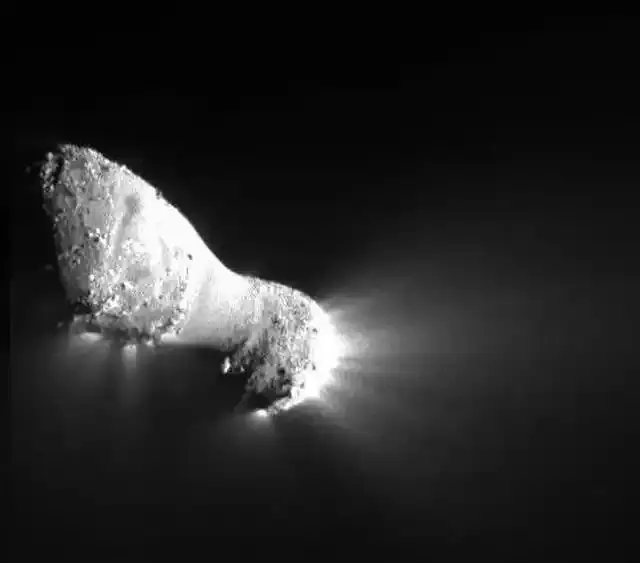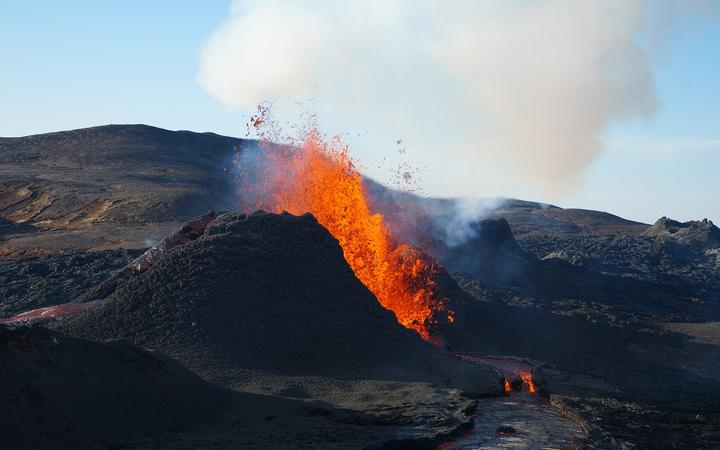Seeds of "dandelion" interstellar
Imagine a dandelion drifting through space — its seeds not carried by the wind, but by the force of curiosity, imagination, and cosmic wonder. *Seeds from an Interstellar “Dandelion”* explores the idea that life, knowledge, or even hope might travel across the stars in the smallest of packages. This article dives into the science and speculation behind interstellar seeding, where the boundaries between science fiction and possibility begin to blur. Ready to follow the trail of these cosmic seeds?
Near-Earth objects

In 2005, the US Congress mandated NASA to find 90 percent of all NEOs larger than 140 meters, the size of a football field. Dinosaurs weren't smart enough to look up through telescopes and protect themselves from the disaster they faced 66 million years ago. Obviously, the human brain is more valuable for survival than the body of a huge dinosaur. Let this serve as an educational moment for all kindergarten children who use physical force to bully their classmates nerds. The mission entrusted by Congress resulted in the construction of Pan-STARRS telescopes. On October 19, 2017, the Pan-STARRS sky survey identified an unusual near-Earth object, the interstellar object 'Oumuamua'. Unlike asteroids or comets in the solar system, 'Oumuamua appeared to have an unusually extreme shape and was pushed away from the sun without showing a comet's tail of gas and dust, increasing the likelihood that it was originally artificial. Three years later, Pan-STARRS discovered a definite artificial object, NASA's 2020 SO booster rocket, which showed an extreme shape, propelled by the pressure of solar radiation and no tail comet because it was made of stainless steel.
Recommend
Dandelion seeds

On March 9, 2017, six months before Oumuamua's closest approach to Earth, an IM2-sized meteorite collided with Earth, as described in a recent paper I wrote with Talbi, Amir Siraj. Surprisingly, IM2 had identical velocity relative to the Sun at great distances and an identical solar semi-main axis like 'Oumuamua. But the tilt of the orbital plane of IM2 around the Sun was very different from that of 'Oumuamua's, which means that the two objects are not connected. However, the matches between some of the orbital parameters of 'Oumuamua and IM2' inspired me to consider the possibility that an artificial stellar object could be a mother ship that launches many small probes as it passes close to Earth. These "dandelion seeds" can be separated from the mother ship by the tidal gravitational force of the sun.
Small premature ejaculation away can lead to a significant deviation from the path of the mother ship near the sun. Changes will be manifested both in the arrival time and in the closest approach distance from the ground. With proper design, these tiny probes will reach Earth when the mother ship passes within 16% of the Earth-Sun separation – as the 'Oumuamua' did. Astronomers won't be able to notice the spray of the microsensors because they don't reflect enough sunlight for current telescopes to notice if they're the size of our small or smaller satellites. Thanks to a large surface-to-mass ratio of the parachute, such technological "dandelion seeds" can slow down in Earth's atmosphere to avoid burning and then chase their targets wherever they land. These technological sensors may use starlight to charge their batteries and liquid water as fuel. This would explain why the habitable zone around stars is targeted, where liquid water may exist on rocky atmospheric planets, such as Earth. Habitable planets will be particularly attractive to transmedial probes, capable of moving between space, air and water. What is the overall purpose of her trip? Similar to real dandelion seeds, probes can deploy the dispatchers' chart. As with biological seeds, probes can also use raw materials on the planet as nutrients for self-reproduction.
Galileo Project

Based on the rate of discovery of interstellar objects, it was estimated in a paper that for every NEO between stars, there are a thousand NEOs of the same size in the solar system. Searching for interstellar meteorites among the many meteorites from the solar system without information about the speed of the collision is like looking for a needle in a haystack. That is why the first IM1 interstellar meteorite, confirmed by velocity measurement by the US Space Command, is the target of an ocean flight fully funded by the Galileo project. We hope to know by restoring the IM1 fragments within the next year whether its extraordinary physical strength is due to being made from an artificial alloy, such as stainless steel. Are there any extraterrestrial probes operating near Earth? We don't know. But the Galileo Project intends to use the scientific method to explore this possibility, following a 2021 report on unknown weather phenomena (UAP) from the Director of National Intelligence to the U.S. Congress. High-quality data is needed to separate the real UAP signal from the noise. The noise level rises in complex environments such as the war zone in Ukraine. The report on unidentified objects with uncertain distance estimates disturbs scientific credibility. Measurements with past events or eyewitness testimonies without documented data from well-calibrated instruments do not constitute scientific evidence. It is necessary to determine the dimensions of objects before demanding their distance, speed of travel and physical size. This is a prerequisite before thinking about a "new physics" to explain it. We can reveal the long history of intelligent life in the Milky Way. As with any other study of history, the lessons learned from this study may inspire us to create a better future for ourselves than the past of all those who inhabited the Milky Way before us.
![]()
Who are these environmental activists, and are they ecologists?
Environmental activism inspires people to act for the planet, from simple clean-ups to influencing policies. But mixing activism with science too carelessly risks undermining trust. To truly protect our world, both activists and scientists must respect their roles without blurring the lines. more- ADVERTISEMENT
![]()
Unexpected reading and writing skills in people with autism
Many non-speaking autistic individuals show surprising reading and writing abilities, revealing untapped literacy potential. Through innovative tests, researchers found that over half could understand written language patterns, challenging long-standing assumptions and opening new paths for communication, education, and inclusion. more- ADVERTISEMENT
![]()
Journey to Mars: The Next Great Leap in Mankind's Quest for Discovery
Mars sparks human curiosity like no other planet—its Earth-like features, potential for life, and promise of resources fuel hope for a future civilization there. Despite daunting technical, environmental, and psychological challenges, global efforts aim to turn this bold dream into reality. more- ADVERTISEMENT
![]()
The Power of Nature: Learn about the forces behind a living volcano
Living volcanoes are powerful natural wonders—windows into Earth’s fiery depths. They dazzle with beauty, yet threaten with eruptions. From shaping landscapes to offering geothermal energy, they reveal nature’s immense force. By studying their behavior, we can better predict their eruptions and harness their energy for a safer, sustainable future. more- ADVERTISEMENT
![]()
Why do most restaurant and café projects fail?
Why Most Cafes & Restaurant Projects Fail? more- ADVERTISEMENT
![]()
Shocking fact: the moon is moving away from the earth!
The Moon is slowly drifting away from Earth—about 3.8 cm each year—due to tidal friction. This subtle shift has been proven through laser technology since 1969. While it won't escape Earth’s gravity, the distancing affects Earth's rotation, making days longer and altering tides and seasonal temperatures. more- ADVERTISEMENT
![]()
Is time travel possible? Astrophysicist explains the science behind science fiction
Time travel fascinates us, but science shows it’s tricky. Einstein’s theory reveals time slows down at high speeds—astronaut Scott Kelly aged slightly slower than his twin Mark. Wormholes might allow time jumps, but they remain unproven. For now, telescopes offer a glimpse into the past, not time machines. more- ADVERTISEMENT
![]()
Mental flexibility - what is it? And how to get there?
Mental flexibility - what is it? And how to get there? more- ADVERTISEMENT
![]()
Embracing stupidity: the hidden value of our mistakes
Embracing stupidity: the hidden value of our mistakes more- ADVERTISEMENT
![]()
Why can't bots click on the "I'm not a robot" box on sites?
Why Can’t Robots Click the 'I’m Not a Robot' Box on Websites more- ADVERTISEMENT





















